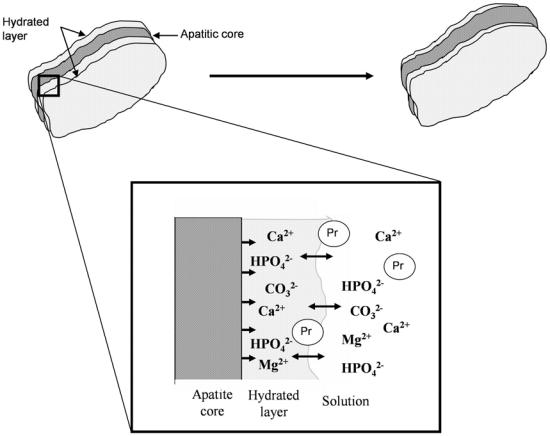Figure 1.

Evolution of the hydrated layer and crystal apatite. During the maturation and growth of the crystal, the hydrated layer, involved in a high surface reactivity, progressively decreased and led to a stable apatitic domain. The structure of the hydrated layer constitutes a pool of loosely bound ions which can be incorporated in the growing apatite domains and can be exchanged by foreign ions in the solution and charged groups of proteins (Pr). Courtesy of C. Rey (Rey et al. (2009); Osteoporos. Int :1013–1021)
